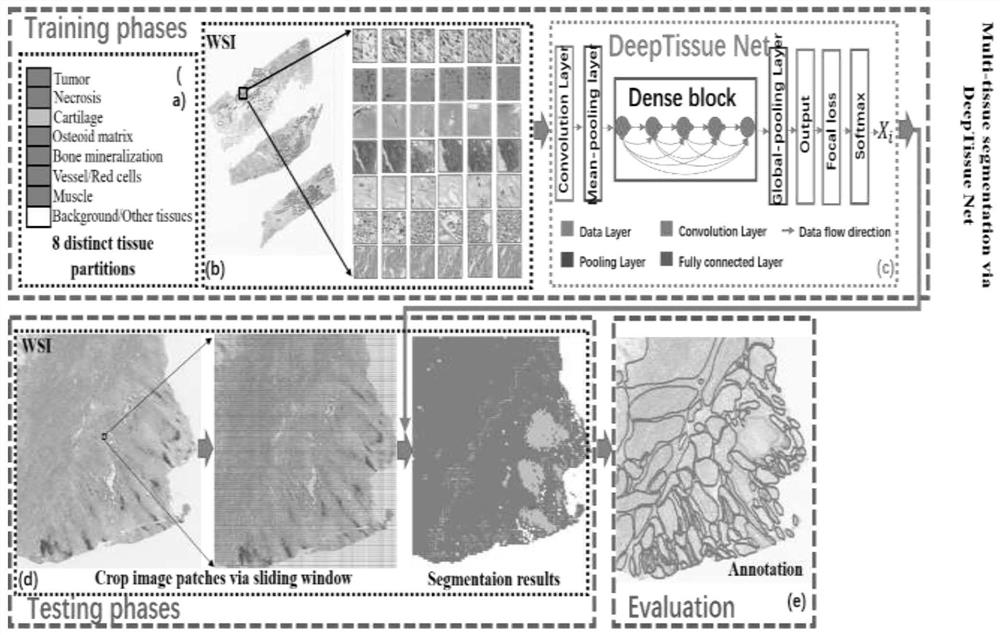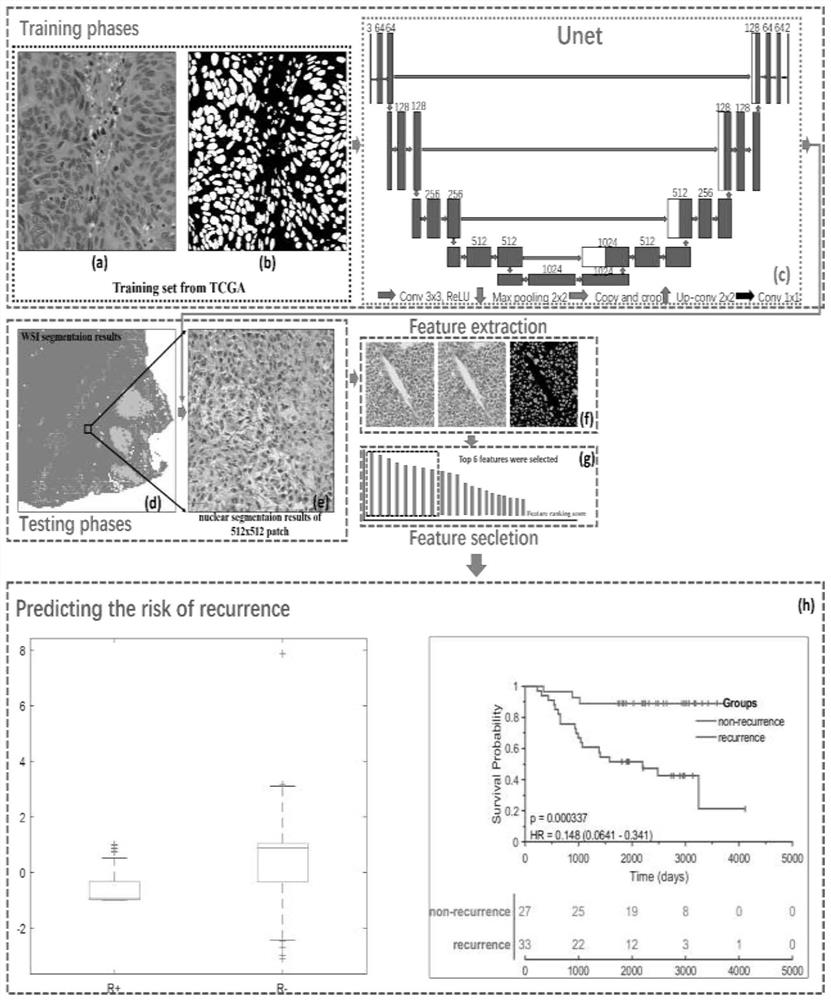Osteosarcoma recurrence risk prediction model based on tissue morphological analysis
A technology of risk prediction and tissue morphology, applied in image analysis, biological neural network model, character and pattern recognition, etc., can solve the problem of long and arduous treatment process
- Summary
- Abstract
- Description
- Claims
- Application Information
AI Technical Summary
Problems solved by technology
Method used
Image
Examples
specific Embodiment
[0036] 1. First, if figure 2 As shown, the trained DeepTisse Net is used to perform multiple tissue segmentation on the full-scan pathological image of osteosarcoma;
[0037] 2. Then, use the trained Unet to segment the tumor region in the pathological image of the full-scan osteosarcoma; image 3 As shown, using UNet to segment WSI living tumor nuclei; it includes training (a-c) and testing (d-e); with the 512x512 image patch downloaded in TCGA and its nuclear annotation (a-b) as the training set, live tumors are divided into 512x512 The overlapping plaques are sent to the trained Unet for nuclear segmentation (d-e);
[0038] 3. If image 3 As shown in (f-g), feature extraction is carried out for the nucleus in the tumor area, and the 6-dimensional most discriminative feature is selected by using the mRMR feature selection algorithm, and sent to the trained random forest classifier to predict whether the patient has recurrence Risk; the visualization of 6-dimensional feat...
PUM
 Login to View More
Login to View More Abstract
Description
Claims
Application Information
 Login to View More
Login to View More - R&D
- Intellectual Property
- Life Sciences
- Materials
- Tech Scout
- Unparalleled Data Quality
- Higher Quality Content
- 60% Fewer Hallucinations
Browse by: Latest US Patents, China's latest patents, Technical Efficacy Thesaurus, Application Domain, Technology Topic, Popular Technical Reports.
© 2025 PatSnap. All rights reserved.Legal|Privacy policy|Modern Slavery Act Transparency Statement|Sitemap|About US| Contact US: help@patsnap.com



